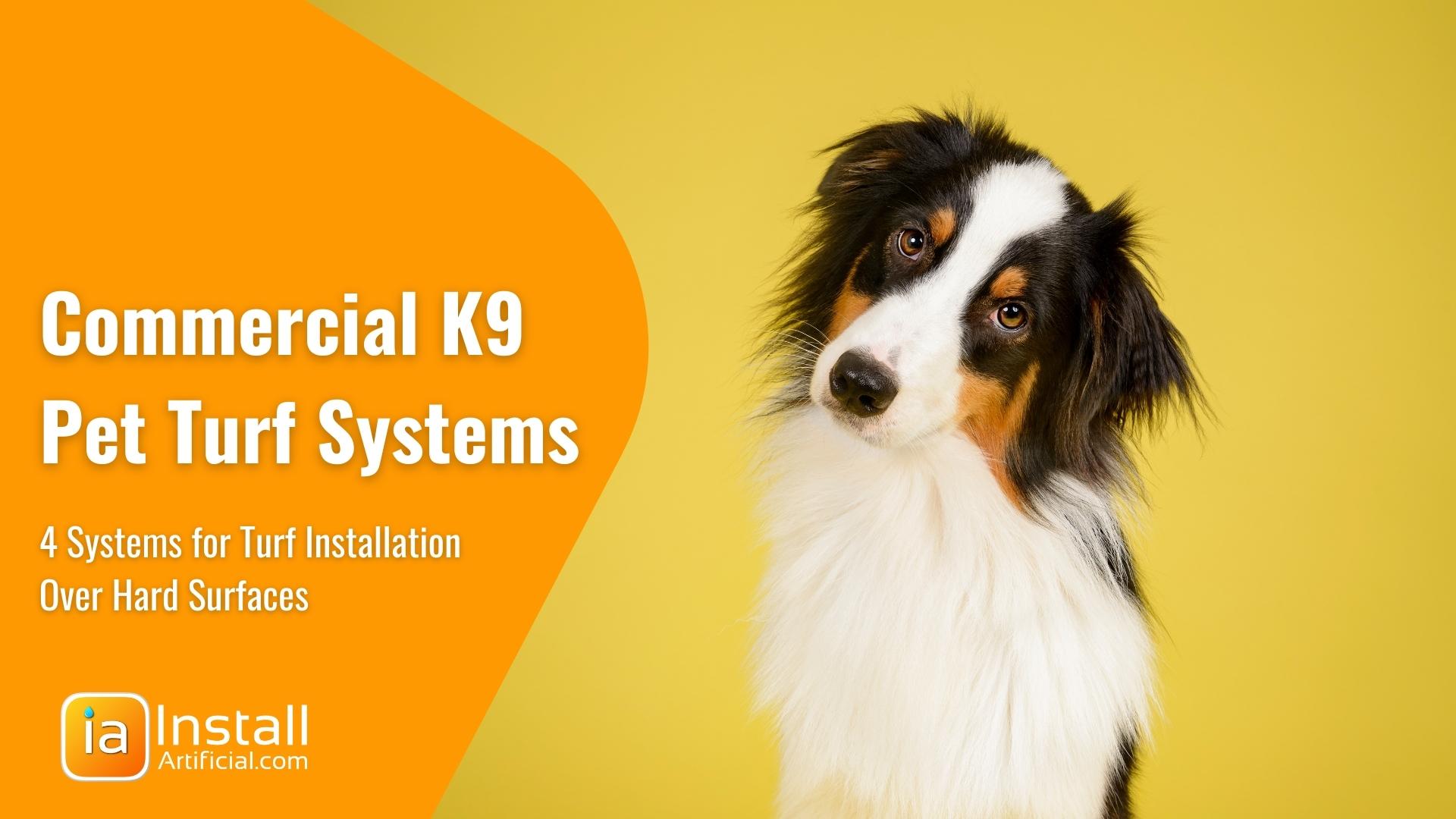
This article is helpful for condominium builders and designers, or those who are looking to create highly-trafficked pet turf on top of a concrete surface. Review 4...
Learn how to install K9 pet turf artificial grass systems for dogs. Discover the best and most used approaches to proper pet turf drainage, and why it's so necessary. See the difference between pet turf materials and hear our recommendations. Find the best ways to control the odor and maintain your artificial pet turf lawn for years to come!
Typically when odors arise in pet turf it stems from the ammonia in urine. The smell of dog urine can plague almost any soft or hardscape in landscaping. Natural grass, concrete, bare dirt, and even artificial grass can begin to smell if regularly used by dogs to go to the bathroom. But don't worry! There are a few things you can do to prevent odor from occurring.
Proper drainage will help accelerate urine and water movement underneath the turf to remove bacteria and odor from the surface. Correct grading and base compaction are key. For the best results, we recommend installing a drainage layer. We'll discuss this layer more below! If you have existing drainage issues, this must be addressed before installing artificial grass.
The best way to ensure your artificial lawn doesn't begin to smell over time is to consistently rinse the grass to flush away any bacteria and urine that's lingering underneath the surface. There are cleansers that can attach directly to your house, such as Wysiwash, that will sanitize the area quickly.
We'd always recommend using pet-friendly materials and infills in areas that are going to be used regularly by your dogs. This will lengthen the life of your installation and require less upkeep on your end. Check out the materials and infills categories to learn more about our recommendations for artificial grass for pets!
Whether you're installing it yourself or having a professional crew come in, it's important to understand how to install pet turf to ensure your artificial grass is truly pet friendly. Creating a clean space that provides advanced airflow and drainage is key when installing artificial turf for dogs.
Installation of pet artificial turf systems starts like any other artificial grass project. The crew will remove 2-3 inches of soil from the base and haul it away. Then the installers will apply approximately 2 inches of class II road base material and compact the base. Next, a layer of k9 turf deodorizer will be applied. Drain core is then laid out along the surface, this is a drainage membrane that accelerates water movement beneath the surface after cleanings. We'll discuss this more below!
For DIY artificial grass installation, substitute decomposed granite to prep the base of the Installation area. After you rough grade the surface, DG and a stabilizer can be used for base installation to offer a solid foundation. Decomposed granite for base materials will ensure your new installation is properly prepared without needing all the tools required to work with class ii road base. Check out our k9 artificial turf installation diy guide for more tips!
Once the base layer is prepared, it is time to lay artificial grass. Make sure the artificial turf has been given time in the sun to relax and is stretched, otherwise wrinkles will occur over time after installing artificial turf. It will be cut to size, seamed, and nailed to the base or stapled to a frame. You'll want to double check that the synthetic grass blades are facing the same direction before moving on to secure seams. Typically when you cut turf to size, there will be excess turf leftover. Make sure to allocate waste material into your overall budget.
Nail-free installation is always a primary recommendation for dog-friendly spaces. If not nail-free, we advise achieving the best results by securing nails every 2 in. on the perimeter and every 2 ft. throughout the lawn.
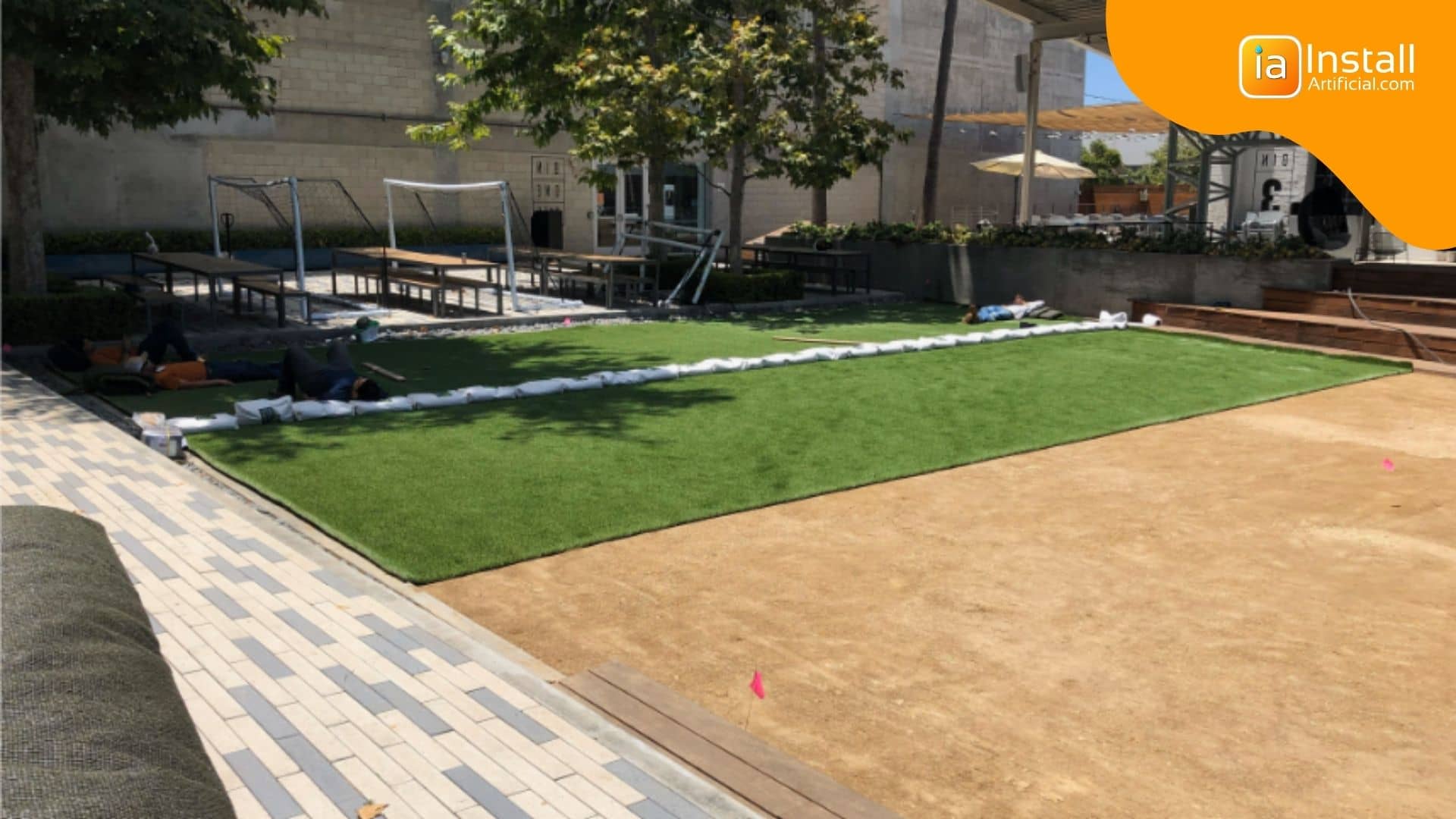
Once the artificial turf is laid and nailed, an infill of your choice is applied. Infill is used to weigh the artificial turf down preventing wrinkles and buckling. It also helps keep the blades upright and resistant to matting. For pet-friendly turf, we always recommend using an antibacterial sand infill to prevent bacteria and keep the surface cooler.
To hear a more in-depth description of the artificial grass installation process, check out our article on how to install artificial grass!
This is the most common additive used in pet turf during base preparation. After the class II road base is compacted, a layer of turf deodorizer, or Zeolite, is applied on top of the base to prevent the buildup of odor. This is a fine substance that traps in ammonia odor and releases it when the area is rinsed down. Turf deodorizer can also be applied as an infill for pet relief areas that experience heavy use.
French drains help control odor in heavily trafficked pet areas. These are typically only necessary in pet daycares, hotels, or areas with existing drainage issues. In this method, a trench is dug underneath the surface. A drainage pipe is then installed to catch the water as it absorbs into the synthetic grass surface and reroute it away from your lawn. The trench will be filled with gravel before continuing base preparation. This option allows for faster water percolation and more waste remediation, essentially offering adequate drainage.
A drainage membrane is one of the most important artificial grass installation tools you'll need when installing synthetic turf for dogs. Drain Core is designed with maximum drainage in mind. It is a plastic sheet with bumps and holes throughout to allow for air and water flow. Without this layer, your pet turf will inevitably begin to smell very bad. The proper drainage system is vital to preventing odors and the build-up of bacteria, especially when installing pet-friendly turf. Urine-saturated artificial grass that doesn't have to ability to flush out will become very problematic.
The core is available as a grid (air drain) or a plastic sheet (drain core). Air drain provides faster drainage and maintains a more rigid structure, but it costs more to install. For this reason, drain core is the most popular drainage product for pet turf systems.
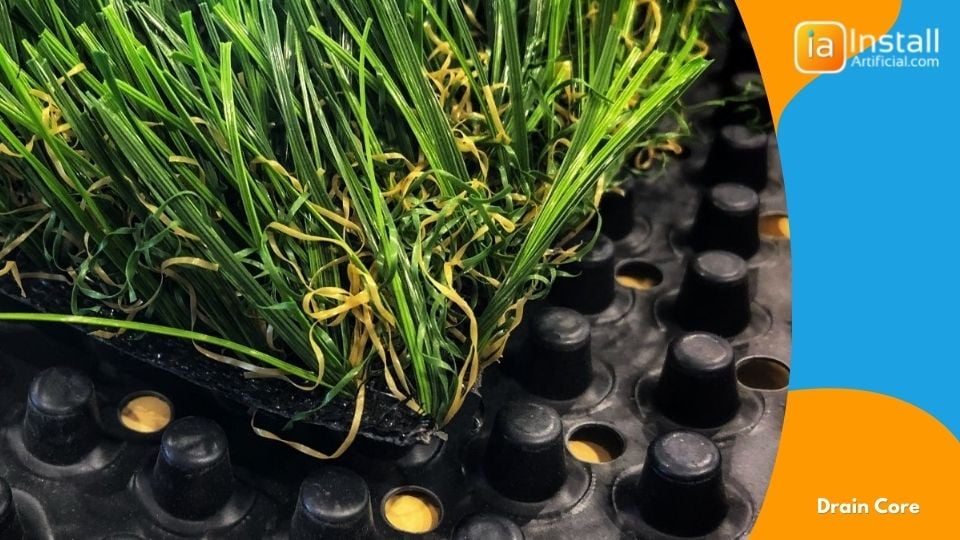
Check out our Pet Turf Materials Explained article to learn more about these products!
There are a few things to keep in mind when selecting the best artificial grass for k9-friendly spaces. The best artificial grass for a pet turf system is typically short with low density. Shorter grass will make the cleaning and maintenance of your pet turf system easier, while low-density grass allows for quick drainage. Plush artificial grass will allow bacteria and liquids to remain within the surface for longer. It is also never recommended to use weed barrier fabric when installing turf for dogs, instead use weed killer.
Durability should also be top of mind when installing artificial grass in an area that's specific to pet use. If you have multiple dogs using this area for play and relief, often we'd recommend choosing artificial grass with a durable blade for the best longevity and wear and tear resistance.
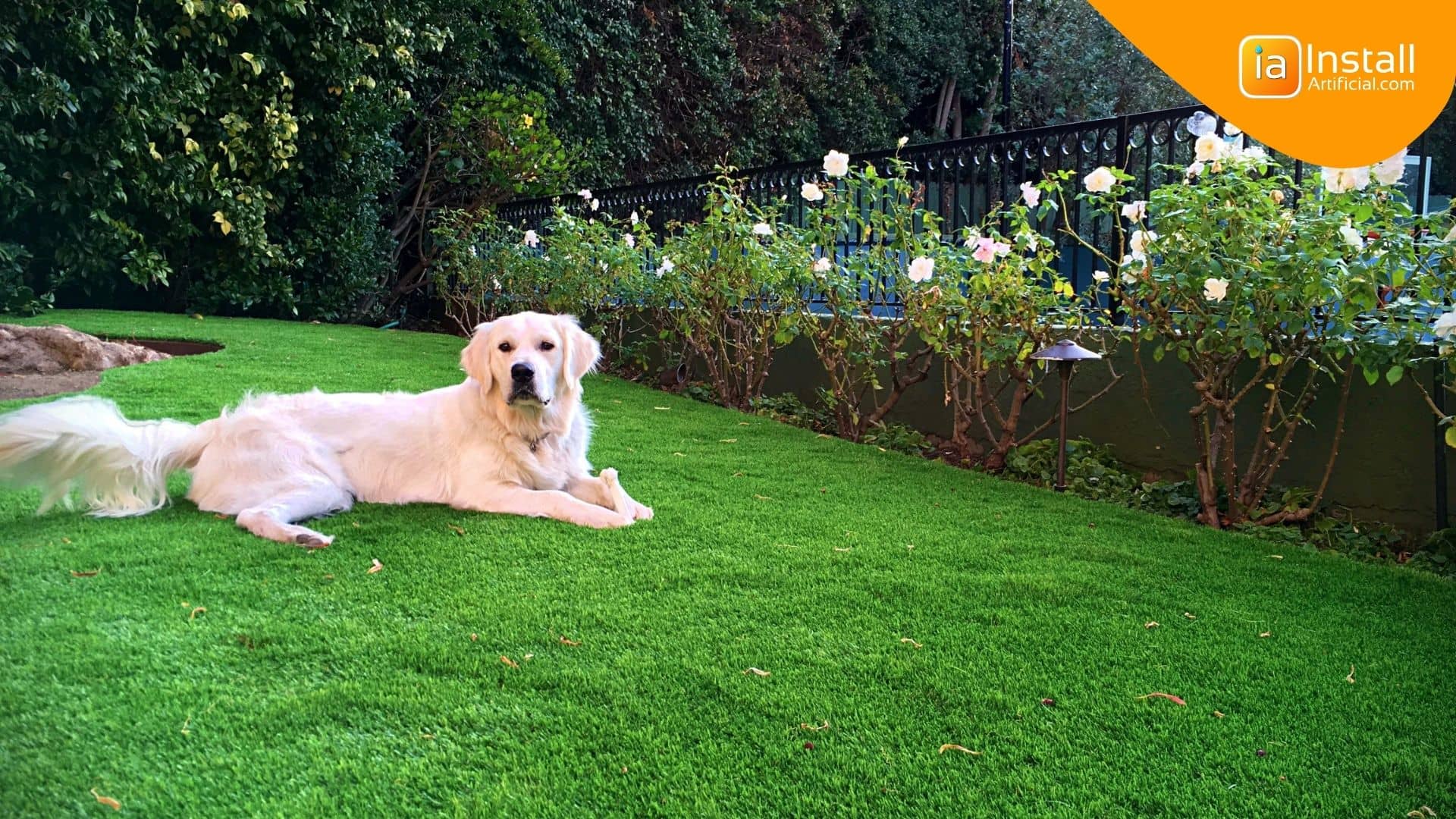
The temperature should also be a big factor when making your decision. On high-temperature days, turf can become warm to the touch. While humans can express discomfort, pets cannot. We don't advise leaving dogs unattended on unshaded artificial grass for long periods of time. Do your research to find the coolest grasses for pets! Browse our Online Turf Lab to check out how hot each artificial grass we offer gets!
For pet turf systems we offer a nail-free application, and this is what manufacturers recommend. Some dogs are prone to digging and over time they can remove the nails from the base resulting in damage occurring or edges beginning to lift. To prevent this, you can install a frame made of either treated wood or plastic around the perimeter of the base and stretch and staple the artificial grass to the frame. This will also remove the need for bender boards or other edging. Nail-free means top safety for both pets and children!
It's also important to keep in mind that not following manufacturer guidelines may make you ineligible for certain parts of their product warranties. Make sure to look into this before deciding whether or not to opt-in for a nail-free install!
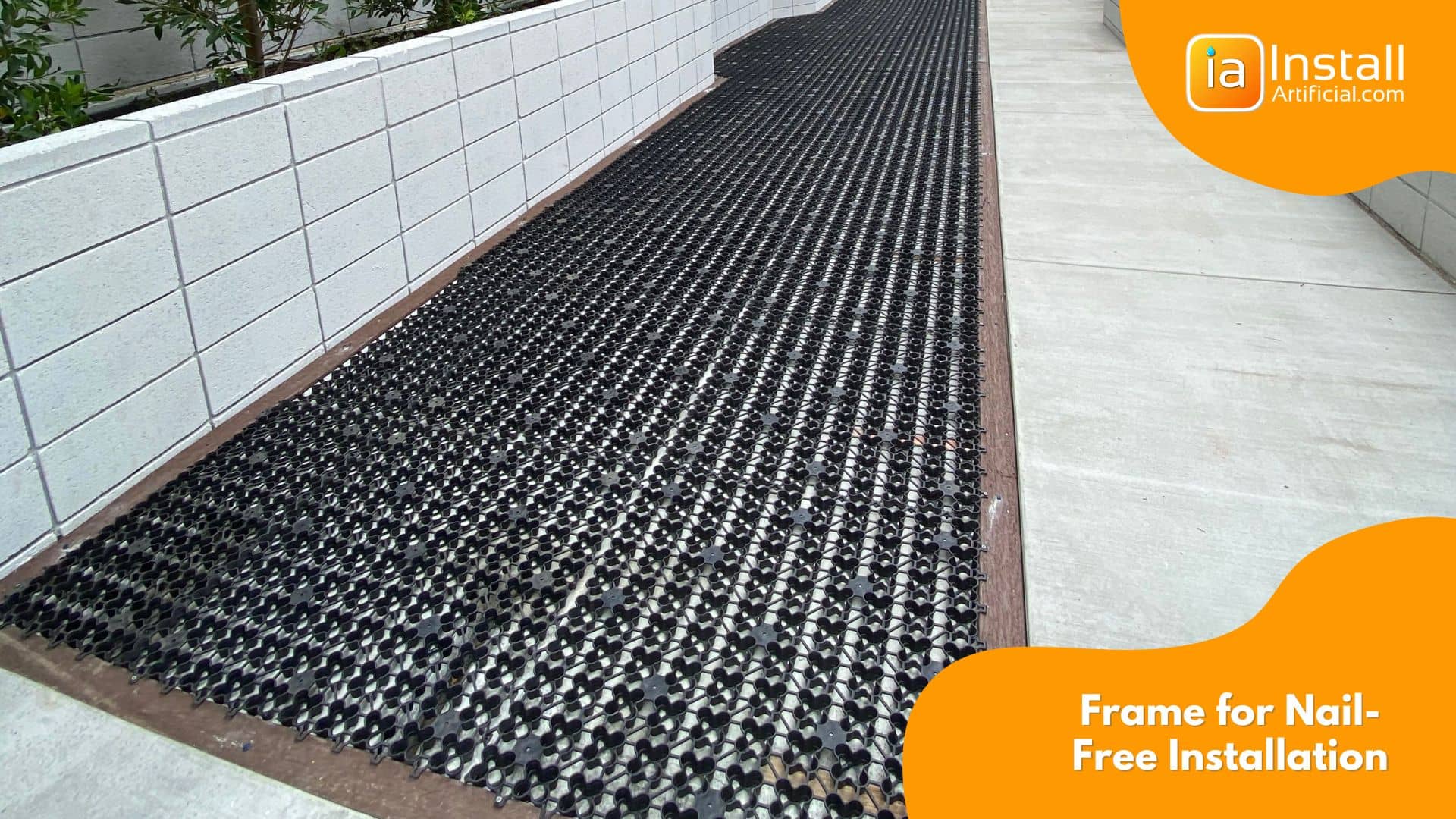
Turf deodorizer is made of lightweight and sharp volcano ash stones that absorb urine. This reduces the initial smell until the turf can be flushed with water. Turf deodorizer is charged with sanitizers that help break down the ammonia smell. However, the granules are abrasive and can leave a chalky residue making it less than ideal on the surface. For this reason, we recommend applying it only underneath the turf.
This infill is made to fight bacteria and allow air to penetrate. Its antimicrobial properties are great for long-term bacteria growth prevention. Antibacterial sand (Envirofill) does not compact which helps keep the infill evenly distributed. Also, it has round coated granules that are non-abrasive making it more ideal for sports and pets. This is the infill that we recommend for artificial grass for pets.
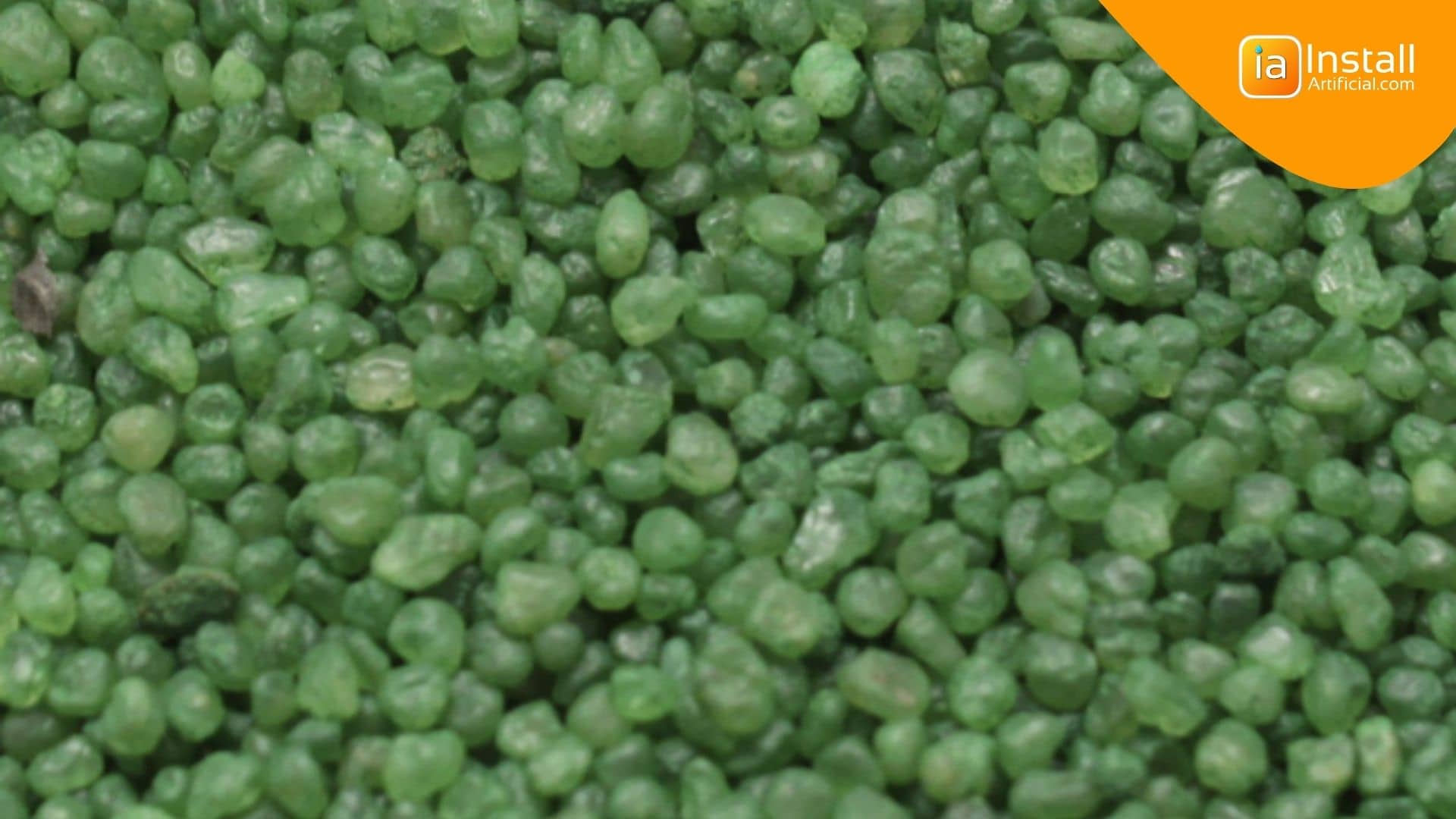
As a 100% organic alternative, infill made of crushed walnut shells has been gaining popularity. Safeshell infill places emphasis on its cooling abilities because the infill itself is so lightweight. By absorbing water but not over-expanding, Nutshell helps keep the surface cooler than regular silica sand. Because it's so lightweight, it may not provide as much support or stability to the blades and we'd recommend using it in conjunction with antibacterial sand if you make this selection.
Silica sand is the most basic and common turf infill. Made of eroded rocks and quartz, this infill is inexpensive and provides stability to the blades keeping them upright. Although this infill is the most affordable there are a few downfalls, especially for pet-specific areas. The particles are angular and abrasive and there is a high chance that the sand will clump together and harden over time. This can cause drainage issues within your pet turf. Silica sand is also known to trap odors from pet relief, so we'd recommend opting for one of the more premium infill options mentioned above.
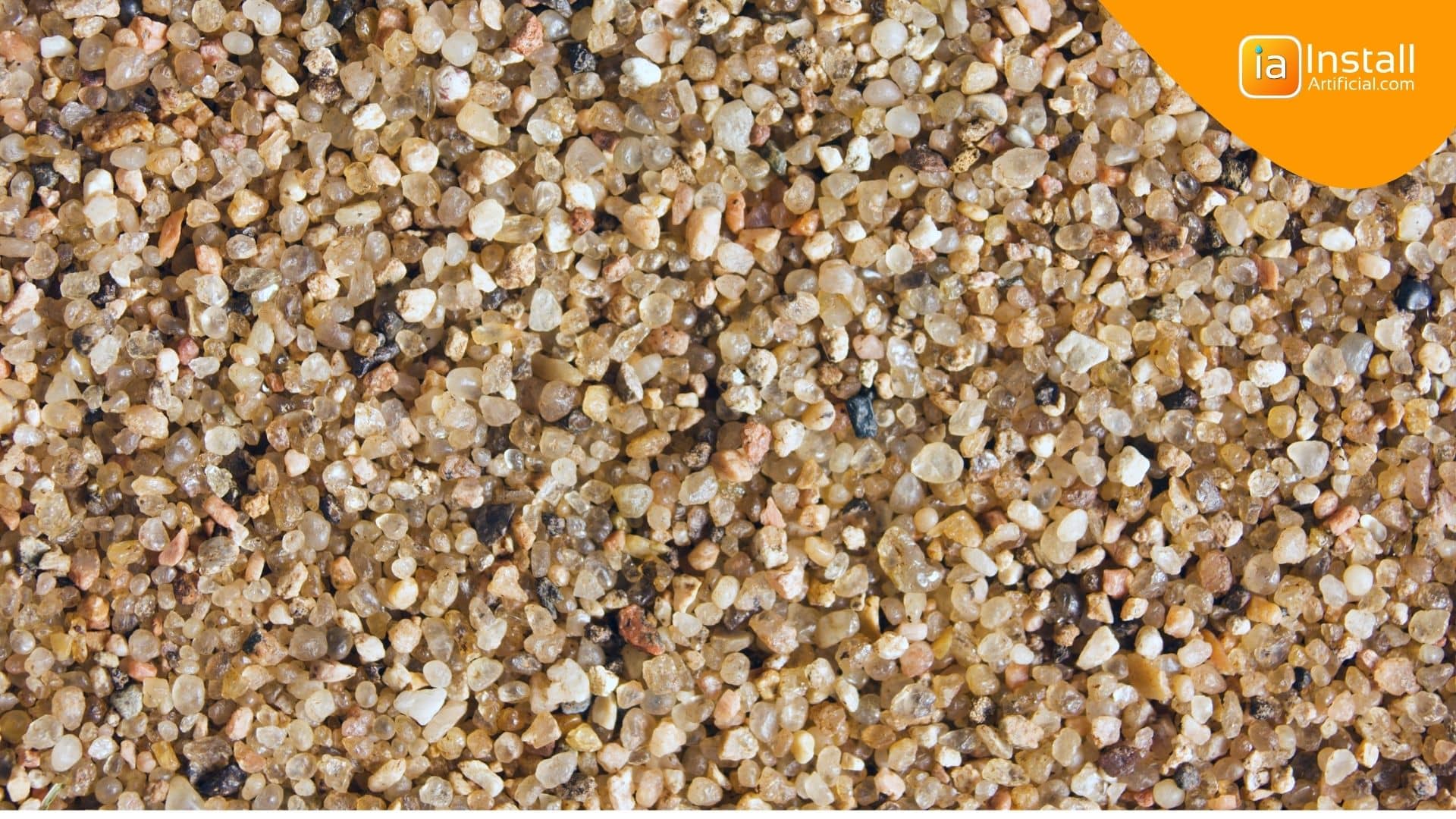
In our experience, odor prevention is about two things: airflow and water flow. No matter what turf infill you use, without constant sanitizing and circulation, your pet turf will smell. Keep this in mind when considering pet turf installation, and be ready to commit to consistent sanitizing to lengthen the life of your installation!
Artificial grass that's consistently used by dogs should be rinsed a couple of times a week. It may sound silly, but hosing down artificial grass is often done wrong. Instead of slightly rinsing the area, try to increase the flow of water. Mix sanitizer (such as 409 cleaner or Wysiwash) with water to achieve immediate results. Our Favorite pet cleansers are those that are natural but tough. Making sure you're using natural sanitizers will help ensure your turf isn't damaged during cleaning.
A great way to keep your area cleaner is to teach your pets to use a localized area for relief. A fake fire hydrant or a mailbox is an easy way to shrink their relief area and reduce water use. This area is designed for pet use only and is usually up to 50 feet in size. Cleaning in this area can also become fully automatic with a chlorine-enabled wash system. Using a system like this is the most hygienic way to keep your front or backyard clean. However, it will require training to use.
You can also build a dog run and create a sectioned-out enclosed space for play and exercise to help minimize the pet relief area! This can significantly reduce the area that requires consistent sanitizing.
We use Wisywash system to sanitize pet turf regularly and control freshness.
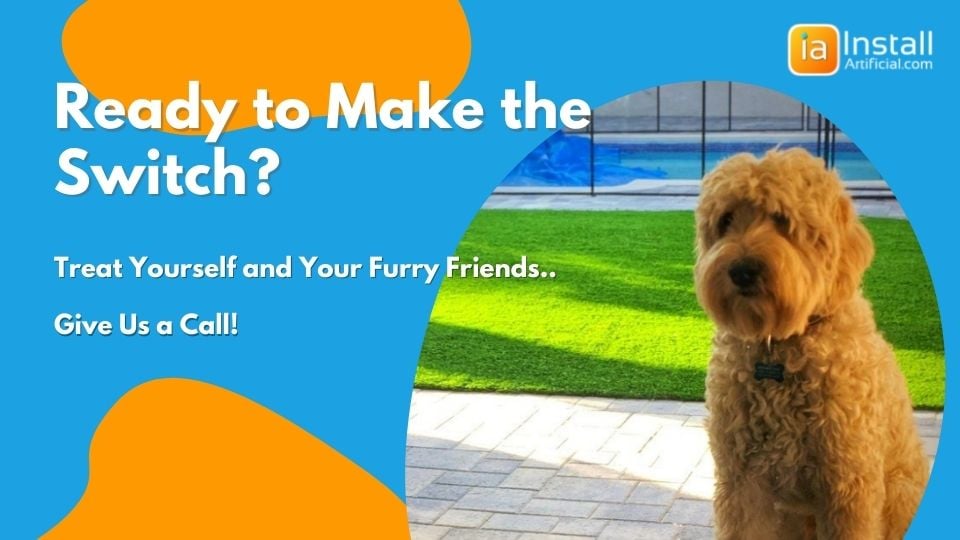
We all know there's nothing that can replace a plush natural green lawn. However, that's just not the reality for most people, especially with the current water restrictions. Customers making the switch to pet turf systems typically have similar causes: Their lawn is dead and uneven. Dust, dirt, and other contaminants are then tracked into the house by their dogs and foot traffic. It can be very difficult to regrow natural grass and can sometimes turn your lawn into a swampy marsh.
Eliminate the need for constant maintenance by opting into K9-friendly artificial turf. The clean and smooth surface is calling your name. Request an estimate with us and receive a response on the same day. Let's do this!
Artificial pet turf, also known as K9 turf or dog-friendly synthetic grass, is specifically engineered to endure the active lifestyles of dogs and other pets. It offers a fantastic solution for pet owners seeking to establish a hassle-free, pristine, and secure outdoor environment for their beloved furry friends.
Here are just a few reasons why artificial pet turf is a fantastic choice for dog owners:
1. Durability: Artificial pet turf is specifically designed to withstand heavy foot traffic and all the running, digging, and playing that dogs love to do.
2. Easy Maintenance: Unlike natural grass, artificial turf doesn't require mowing, fertilizing, or watering. It's a breeze to clean up after pets, and waste can be easily removed.
3. Hygiene: Artificial pet turf is engineered to drain efficiently, preventing the buildup of odors and bacteria. Say goodbye to unpleasant smells!
4. Allergy-Friendly: If your furry friend has allergies, artificial turf is a great option. It doesn't produce pollen or trigger allergies in pets, providing a safe and comfortable environment.
5. Year-Round Beauty: Artificial turf stays green and lush throughout the year, ensuring a visually appealing outdoor space no matter the season.
Switching to artificial pet turf offers a multitude of benefits for both you and your four-legged companion. Say goodbye to the hassle of maintaining a natural lawn and hello to a pristine and pet-friendly outdoor oasis!
Although it may be tempting to try installing artificial pet turf on your own, it is highly recommended to hire a professional installer to achieve the best results. Professionals possess the expertise, tools, and know-how needed to ensure a proper installation, from site preparation to securing the turf in place. By enlisting their help, you can have peace of mind knowing that your pet turf will be installed correctly and efficiently.
The installation process for artificial pet turf is comparable to that of regular artificial grass, with a few extra factors to consider. It's important to ensure that the base layer is sturdy enough to withstand the increased wear and tear from pets, and that the drainage system is specifically designed to efficiently handle pet urine and water.
Maintaining your artificial pet turf is a breeze with these simple steps:
1. Stay on Top of Cleaning: Promptly remove any solid waste and give your turf a good hose down to rinse away any residue. Keeping your pet's outdoor space clean and fresh has never been easier!
2. Tackle Urine Spots: Rinse urine spots frequently and use a pet-friendly enzyme cleaner to prevent any unwanted odors. Your furry friend will appreciate the clean and hygienic environment.
3. Show Some Love with Grooming: Occasionally brush the turf to keep the fibers upright and prevent any matting. It's a small effort that goes a long way in maintaining the pristine appearance of your pet turf.
4. Replenish the Infill: Over time, the infill material may settle. Consider replenishing it to ensure that your turf maintains its optimal performance and durability. Your pet will continue to enjoy a safe and comfortable play area.
With these easy maintenance steps, you can keep your artificial pet turf looking and smelling fresh all year round. It's the perfect solution for a hassle-free and pet-friendly outdoor space!
Absolutely, artificial pet turf is completely safe for dogs. The materials used in its construction are non-toxic, guaranteeing the well-being of your furry friends. Moreover, the advanced drainage systems incorporated into the turf effectively prevent the accumulation of harmful bacteria. Just make sure that any infill material you choose is also pet-friendly and non-toxic.
Absolutely! Installing artificial pet turf indoors for dogs is definitely possible. However, it's crucial to take into account the importance of proper drainage and the potential for odors in an indoor environment. To ensure a successful and well-planned installation, it is highly recommended to consult with a professional. They will be able to guide you through the process and ensure that your indoor pet turf provides a safe and enjoyable space for your dogs.
The lifespan of artificial pet turf can be influenced by various factors such as how often it is used, the climate it is exposed to, and the level of maintenance it receives. In general, high-quality artificial pet turf has the potential to endure for 10 to 15 years or even longer if properly cared for.
Indeed, artificial pet turf is a versatile solution for a wide range of pets, including our feline friends. However, it's important to acknowledge that each animal has unique behaviors and needs. Therefore, when designing and installing the turf, it is crucial to consider the specific requirements of the pets who will be enjoying the area. By doing so, you can create a perfect oasis that caters to their individual needs and ensures their utmost comfort and happiness.

This article is helpful for condominium builders and designers, or those who are looking to create highly-trafficked pet turf on top of a concrete surface. Review 4...